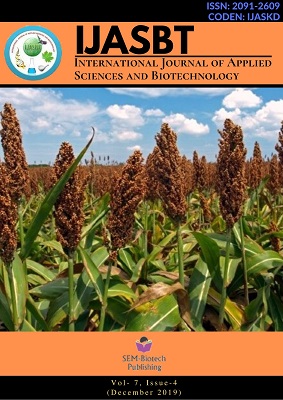Effectiveness of Induced Molting in Laying Hens- A Feed Removal Approach
DOI:
https://doi.org/10.3126/ijasbt.v7i4.25771Keywords:
Induced molting, Egg production, Feed restriction, LayersAbstract
Induced molting of laying hens is a common husbandry practiced in many commercial farms. This study was aimed to evaluate the effectiveness of induced molting on production parameters along with production economics of Layers. For this study, Lohmann Brown-Classic hens were reared in a modern cage system from 10 weeks of age. There was no significant difference(P>0.05) in egg production in Hen Day Basis (HDP) before 65 weeks in comparison to standard performance table provided by Lohmann Brown- Classic Layers Management Guide (Cage Housing). A total of 8087 laying hens were divided into two treatment groups after 65 weeks of age; one group (N=4055) without any feed restriction (control=T0) and another (N=4032) had induced molting with 15 days of feed restriction, provided with only water and mineral supplements (T1) followed by five days of exclusive Ground Maize feeding. The average HDP before division of treatment was recorded 83.37%. The T0 and T1 group were reared up to 85 and 109 weeks respectively, in accordance to the economical sustainability. The feed intake per bird, egg production including marketable and non-marketable eggs and mortality along with production economics of both groups were recorded. The T1 group reached its peak egg production (88.48%) on Hen Day Basis (HDP) after 62 days following treatment which was higher (P<0.05) than the T0 group. The ratio of marketable to non-marketable eggs was found higher in T1 (69.32:1) than that of T0 (38.53:1). The production cost per egg was recorded NRs.6.86 and 6.99 respectively for T1 and T0 group with 4.33% more profit on T1 than T0 group. This study suggests that induced molting with feed restriction approach is beneficial to bypass the scarcity period with falling market value of eggs and also increase the ratio of marketable eggs to non-marketable eggs.
Int. J. Appl. Sci. Biotechnol. Vol 7(4): 429-433




